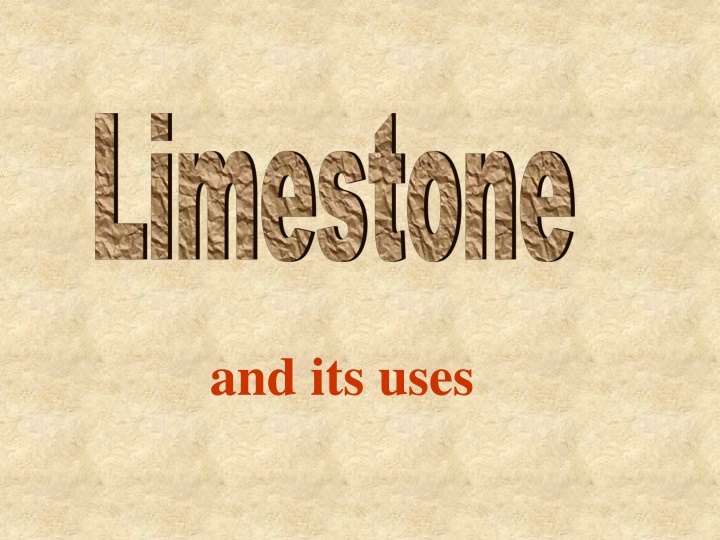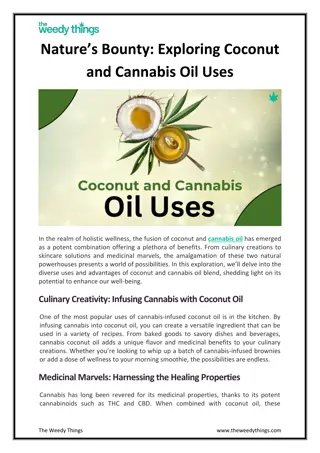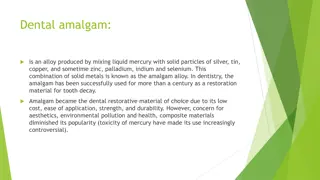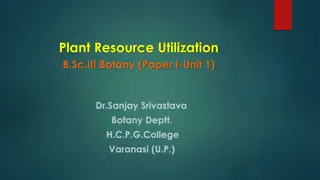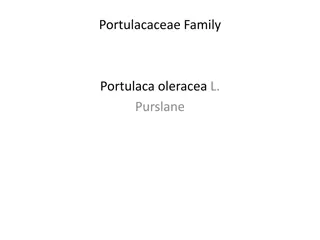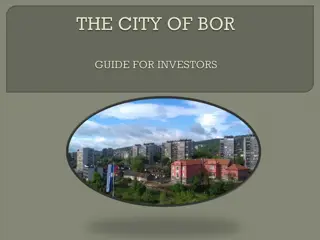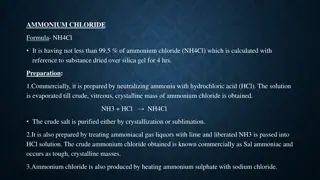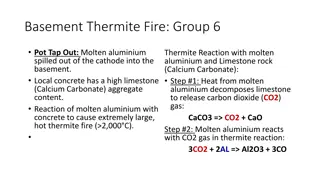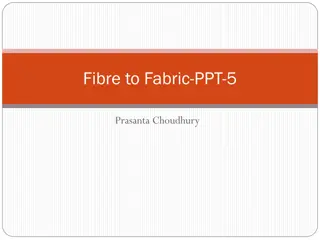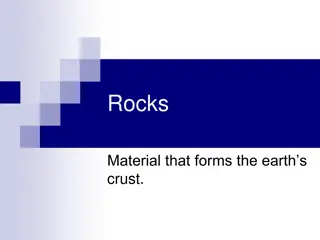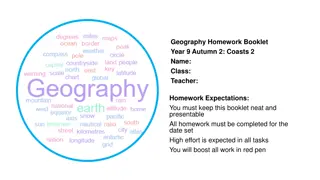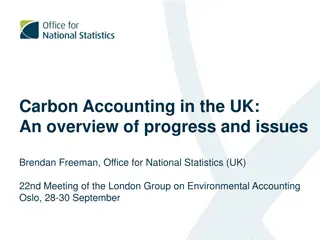Limestone and Its Uses
Limestone, a sedimentary rock mainly composed of calcium carbonate, has various applications such as building, making cement, neutralizing acid, and more. By heating it, limestone decomposes into calcium oxide and carbon dioxide, and reacts with water to form calcium hydroxide. Quicklime and slaked lime are key products derived from limestone, used for purposes like neutralizing acidic soils and testing for carbon dioxide. Explore the properties and versatile uses of limestone in different industries and environmental applications.
Download Presentation

Please find below an Image/Link to download the presentation.
The content on the website is provided AS IS for your information and personal use only. It may not be sold, licensed, or shared on other websites without obtaining consent from the author.If you encounter any issues during the download, it is possible that the publisher has removed the file from their server.
You are allowed to download the files provided on this website for personal or commercial use, subject to the condition that they are used lawfully. All files are the property of their respective owners.
The content on the website is provided AS IS for your information and personal use only. It may not be sold, licensed, or shared on other websites without obtaining consent from the author.
E N D
Presentation Transcript
What is limestone? It is a sedimentary rock It was formed mainly from sea shells It is the compound called calcium carbonate It is a useful raw material
What can limestone be used for? Building walls Building houses Limestone is also used to make cement and concrete Neutralising excess acid in lakes or soils
More about limestone Limestone is dug up out of the ground in quarries In Britain about 150 million tonnes of limestone are quarried each year Limestone is the compound calcium carbonate It s formula is CaCO3 Limestone can be chemically changed into other things
Heating limestone When limestone (calcium carbonate) is heated, it will break down (decompose) When something breaks down with heat we call this reaction a . Thermal decomposition reaction Calcium carbonate will have broken down into calcium oxide and carbon dioxide We call calcium oxide quicklime
A word equation for this reaction Calcium heat calcium carbon Carbonate oxide dioxide
Reacting quicklime with water Calcium oxide (quicklime) is a strong alkali It reacts with water to form calcium hydroxide Calcium hydroxide is also known as slaked lime
A word equation for this reaction calcium + water calcium oxide hydroxide
Uses for slaked lime To neutralise acidic soils, and to break up the soil so that plants can grow well To neutralise lakes which have been polluted by acid rain
Another use for calcium hydroxide Calcium hydroxide is also called limewater Limewater is used to test for the presence of carbon dioxide gas We breathe out a lot of carbon dioxide If we blow through a straw into limewater it will change from clear to milky-white The substance formed in this reaction is insoluble calcium carbonate
A word equation for this reaction calcium + carbon calcium + water hydroxide dioxide carbonate
The Limestone Cycle These reactions all make up the limestone cycle.
The limestone cycle limestone carbon dioxide heat quicklime limewater more water water Slaked lime
Tasks: Use the worksheet called The Limestone Cycle to fill in the gaps and complete the equations for the reactions of limestone. Copy out The Limestone Cycle. Answer questions 1-5 on the next worksheet using the information given and your own Knowledge. Afterwards copy out the summary.
HOMEWORK Complete the worksheet on Questions on Limestone for next lesson.
This powerpoint was kindly donated to www.worldofteaching.com http://www.worldofteaching.com is home to over a thousand powerpoints submitted by teachers. This is a completely free site and requires no registration. Please visit and I hope it will help in your teaching.
